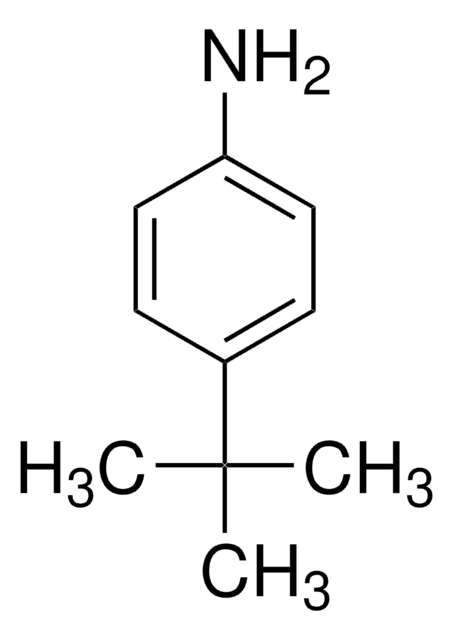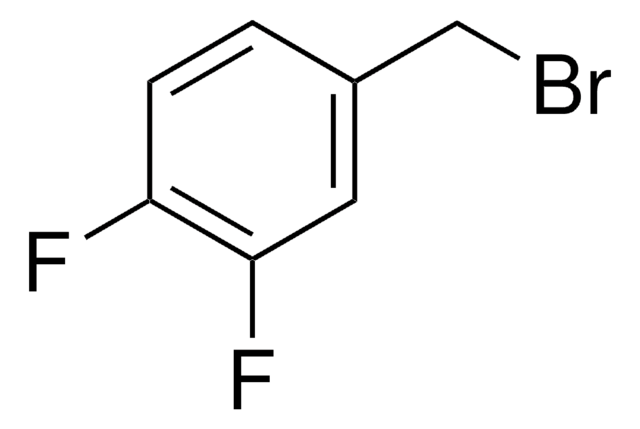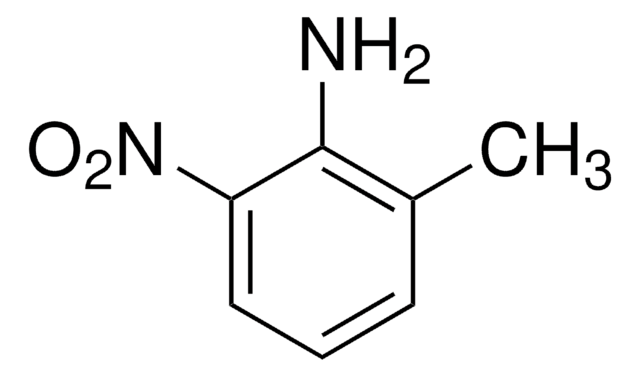360619
3-Bromo-4-methylaniline
98%
Sinonimo/i:
3-Bromo-p-toluidine
About This Item
Prodotti consigliati
Saggio
98%
Stato
solid
P. ebollizione
254-257 °C (lit.)
Punto di fusione
27-30 °C (lit.)
Gruppo funzionale
bromo
Stringa SMILE
Cc1ccc(N)cc1Br
InChI
1S/C7H8BrN/c1-5-2-3-6(9)4-7(5)8/h2-4H,9H2,1H3
GRXMMIBZRMKADT-UHFFFAOYSA-N
Applicazioni
Avvertenze
Danger
Indicazioni di pericolo
Consigli di prudenza
Classi di pericolo
Acute Tox. 3 Oral - Eye Irrit. 2 - Skin Irrit. 2 - STOT SE 3
Organi bersaglio
Respiratory system
Codice della classe di stoccaggio
6.1C - Combustible acute toxic Cat.3 / toxic compounds or compounds which causing chronic effects
Classe di pericolosità dell'acqua (WGK)
WGK 3
Punto d’infiammabilità (°F)
235.4 °F - closed cup
Punto d’infiammabilità (°C)
113 °C - closed cup
Dispositivi di protezione individuale
Eyeshields, Faceshields, Gloves, type P2 (EN 143) respirator cartridges
Scegli una delle versioni più recenti:
Possiedi già questo prodotto?
I documenti relativi ai prodotti acquistati recentemente sono disponibili nell’Archivio dei documenti.
Filtri attivi
Il team dei nostri ricercatori vanta grande esperienza in tutte le aree della ricerca quali Life Science, scienza dei materiali, sintesi chimica, cromatografia, discipline analitiche, ecc..
Contatta l'Assistenza Tecnica.









